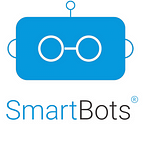Are Chatbots and Virtual assistants the same?
Conversational AI has seen an exponential rise in popularity in the last decade and has become mainstream over the past two years. Enterprise adoption of Conversational AI is accelerating. Businesses are investing millions of dollars for conversational AI applications with massive expectations to improve customer experience and operational efficiencies.
Chatbots and Virtual Assistants are leveraging AI technologies to provide innovative and efficient solutions benefitting customers, employees, and partners. In this scenario, it is crucial to understand the fundamental differences between a chatbot and a more sophisticated solution like a virtual assistant.
Businesses and professionals who are planning or implementing a conversational AI solution should know this difference to reap benefits out of these technologies. Without such proper understanding, there will be a high chance of failure to meet the expectations.
Chatbot
A basic chatbot enables the user to ask questions and is programmed to respond with relevant answers from the knowledge base. Chabot, aka FAQ chatbot, uses NLP (Natural Language Processing) to identify the key-words of the user’s question and responds with programmed answers accordingly. It works similarly to a search engine. Since chatbots are keyword-based, if the user asks the same question differently, the chatbot will not be able to respond though equipped with the required knowledge. Depending on how many ways the same question can be constructed, the failure rate can be high with chatbots.
Top 4 Most Popular Bot Design Articles:
2. One metric, one platform and one vertical
Intelligent Virtual Assistants (IVA)
Whereas an Intelligent virtual assistant understands the meaning and intent of the user query using NLP and NLU technologies and generates a dynamic response. Intent understanding enables virtual assistants to hold conversations longer with the user. Virtual assistants also can understand the context and provide more personalized and relevant answers.
Key differences between a chatbot and virtual assistant
- Language Understanding — Chatbots can identify the key-words but cannot understand the intention of the user. They provide relevant answers based on those key-words. On the other hand, Virtual assistants can identify the intent, understand the emotion, and analyze the intricacies of the natural language. Virtual assistants are more adaptable and offer personalized and human-like interactions with the user.
- Context Handling — When we interact with others, the context of our intentions or actions plays a significant role in the interaction. Our understanding of language, emotions, and social cues may differ depending on where, how, and when we encounter them. Chatbots are not capable of understanding the context. Virtual assistants, also known as contextual assistants, consider the context while generating the response, meaning that they are capable of understanding and responding to different and unexpected user inputs. Context handling enables the virtual assistant to provide more personalized and relevant responses to the user. They can gracefully handle the interaction when the user switches from the expected conversation path.
- Learning and Improvements — Chatbots are programmed with static responses. In contrast, virtual assistants are more adaptive in nature and can learn from past interactions, thereby improving the quality of future interactions. This makes virtual assistants less likely to fail when trained with large amounts of data over a period.
- Perform Tasks — Chatbots are generally used as conversational interfaces for simple FAQs and cannot perform tasks. Virtual assistants can assist the user in performing defined tasks, like checking order status, raising a service ticket, scheduling an appointment, sending notifications, and so on.
To Summarize — Chatbots or FAQ Chatbots are the simplest and most common type. They allow the users to ask questions and provide the scripted answers based on the simple key-word search and set of rules. They are prone to make mistakes when the user input is unexpected or deviates from the expected conversation path. Virtual Assistants, aka Contextual assistants, are more intelligent and context-based. They can understand the user’s intent, emotion, and context and provide personalized and dynamic responses. They can handle unexpected user inputs and perform tasks. Virtual Assistants, when implemented successfully, enables businesses to offer great conversational experiences with customers, employees, and partners.
Reach out to me at Stallin@smartbots.ai for any queries related to Conversational AI.
Author: Stallin Sanamandra
